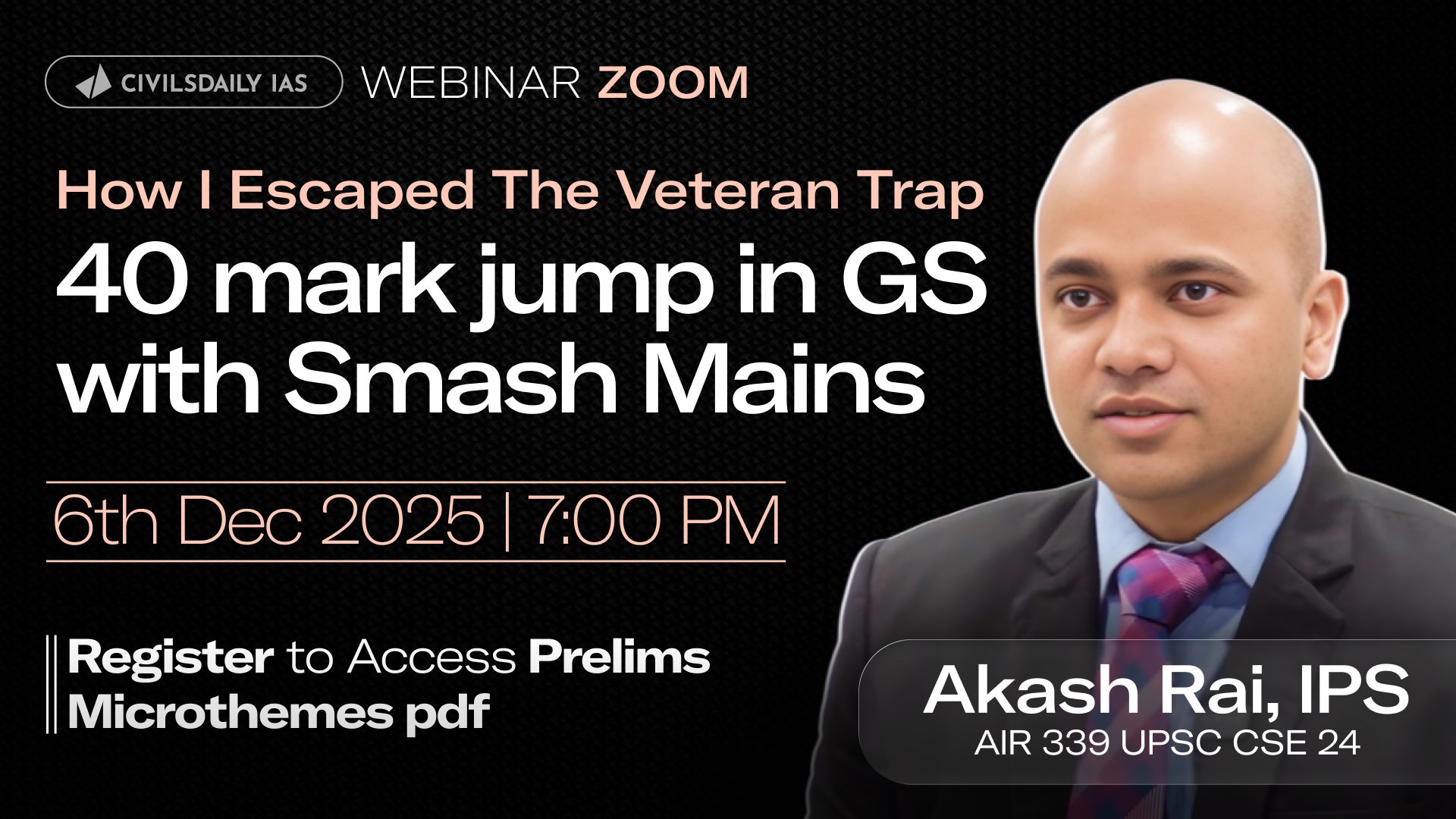PYQ Relevance:[UPSC 2016] Increasing cross-border terrorist attacks in India and growing interference in the internal affairs of several member-states by Pakistan are not conducive for the future of SAARC (South Asian Association for Regional Cooperation). Explain with suitable examples. Linkage: Pakistan is “continually finding ways and means every few years to provoke a conflict” and seeks to “bleed India by a thousand cuts”. These actions are often manifested as cross-border attacks and interference, making this question highly relevant to the conflict dynamic described in the article. This question directly addresses “cross-border terrorist attacks in India” and “interference in the internal affairs… by Pakistan”. |
Mentor’s Comment: India’s recent clash with Pakistan highlights a troubling and ongoing pattern — Pakistan’s military-led and radicalised government keeps trying to destabilise India. Even though India has a clear advantage in technology and strategy, the risk of future conflict remains high. This is due to Pakistan’s lowering nuclear threshold, rising religious nationalism, and growing ties with powerful allies. The clash also showed how modern warfare now relies heavily on technology like drones, radar, and advanced missiles. It exposed India’s weak spots, especially in space-based defence — a major concern if India faces a two-front war with both China and Pakistan.
Today’s editorial will talk about the ongoing pattern — Pakistan’s military-led and radicalised government keeps trying to destabilise India. This content would help in GS Paper II ( IR) and GS Paper III (Defence).
_
Let’s learn!
Why in the News?
The recent conflict shows that Pakistan’s military-led leadership keeps trying to find ways to disrupt or hold back India’s progress.
What drives Pakistan to provoke India repeatedly?
- Military Mindset Seeking to Undermine India’s Progress: Pakistan’s military-dominated leadership aims to weaken India continuously despite past defeats, pursuing a strategy to “bleed India by a thousand cuts.” Eg: Recurrent cross-border skirmishes and proxy insurgencies in Kashmir.
- Ideological and Religious Nationalism: Pakistan’s identity is deeply rooted in religious nationalism, seeing India’s secular democracy as its ideological enemy. Kashmir is viewed as a “jugular vein” essential to Pakistan’s national ambition. Eg: Statements by Pakistan’s army chief emphasizing Pakistan as a religious state based on the ‘Kalima’.
- Political Instability and Military Control: The military controls Pakistan’s politics, using conflict with India to legitimize its authority and distract from internal issues. Eg: Military interference in elections and sidelining of civilian leaders like Imran Khan.
Why is Pakistan’s military leadership crucial to regional peace?
- Military Dominance Over Political Power: Pakistan’s military controls key decisions, often overriding civilian government, making it the primary actor in India-Pakistan relations. Eg: The military’s role in disqualifying Imran Khan from elections and influencing the civilian leadership.
- Driver of Conflict and Peace Prospects: The military’s stance determines whether Pakistan pursues conflict or peace with India, as it often promotes hostility to maintain its influence. Eg: Recent provocations and cross-border attacks orchestrated under military leadership despite diplomatic efforts.
- Influence on Regional Stability: As a nuclear-armed force, the military’s policies significantly impact regional security and peace, especially given Pakistan’s alliance with China and involvement in proxy wars. Eg: Pakistan’s military endorsement of religious nationalism and hardline Kashmir policies increases tensions in South Asia.
How did the conflict show the role of drones and tech in warfare?
- Rise of Drone Warfare: The conflict highlighted the increased use of drones for reconnaissance and strikes, making warfare more precise and cost-effective. Eg: Pakistan deployed Turkish Songer drones, while India used Kamikaze drones for targeted responses.
- Airborne Systems & Escalation Dominance: Advanced airborne early warning systems and electronic warfare tools played a key role in gaining escalation dominance quickly. Eg: India’s use of Rafale jets supported by multi-layered air defence systems like Aakash, S-400, and Barak ensured superior aerial control.
- Integration of Tech in Modern Combat: The conflict revealed the importance of system integration, electronic countermeasures, and kill chain efficiency in tech-driven warfare. Eg: Speculation on whether a Chinese J-10C could use Pakistani radar guidance underscored interest in interoperability and tech collaboration in proxy conflicts.
Who controls Pakistan’s key decisions today?
|
Where are the gaps in India’s defence readiness?
- Lack of Space-Based Surveillance: India lacks a dedicated satellite system for real-time surveillance, early warning, and secure communication, which is critical for modern warfare. Eg: India must improve its satellite-based reconnaissance to prepare for a two-front warscenario involving Pakistan and China.
- Limited Preparedness for Two-Front War: While India’s strength is sufficient against Pakistan alone, a simultaneous conflict with China would strain resources and expose strategic vulnerabilities. Eg: The need to balance the combined capabilities of both adversaries highlights the absence of a cohesive dual-front strategy.
Way forward:
- Boost Indigenous Space and Surveillance Capabilities: India must rapidly invest in and deploy a dedicated constellation of military satellites for real-time reconnaissance, early warning, and secure communication to ensure situational awareness across borders. Eg: Collaboration between ISRO, DRDO, and private players can fast-track satellite-based surveillance systemsto monitor threats from both Pakistan and China.
- Formulate a Coherent Two-Front War Doctrine: India should develop a comprehensive dual-front military strategy, including integrated theatre commands, logistics readiness, and joint force training, to ensure faster, coordinated responses. Eg: Establishing Integrated Battle Groups (IBGs) and enhancing border infrastructure can increase India’s mobility and readiness for high-intensity, multi-front warfare.
Get an IAS/IPS ranker as your 1: 1 personal mentor for UPSC 2024

